“You have squeezed yourself into the span of a lifetime and the volume of a body, and thus created the innumerable conflicts of life and death.
Have your being outside this body of birth and death and all your problems will be solved.
They exist because you believe yourself born to die.
Undeceive yourself and be free. You are not a person.”1
I had recently read Nisargadatta Maharaj’s book Consciousness and the Absolute, based on the final talks he gave before he passed over. I loved reading the book; it was sharper than I Am That (the book which made Maharaj famous, and regarded by many as a modern spiritual classic on Advaita), in a way. One got the distinct feeling that as he was running out of time (Maharaj was dying of Cancer), he wanted to deliver the Teaching in as crisp and concise a manner as possible. It was laser sharp in its delivery. I used to mention to friends that sentences of Nisargadatta came at you like golden arrows going straight into your heart. However, my friend George perhaps put it more appropriately when he said, “For me, it’s like Maharaj was pumping bullets into me.” For, Maharaj was always hard-hitting and to the point.
When a visitor asked him how he felt about having the disease, Maharaj promptly replied, “… I came to the conclusion that whatever is happening is in the consciousness. I told the consciousness, ‘It is you who is suffering, not I’. If consciousness wants to continue to suffer, let it remain in the body. If it wants to leave the body, let it. Either way, I am not concerned.”2 Nothing could truly shake the foundations of the Absolute state he was so rooted in.
One lazy Sunday morning over a cup of chai at a restaurant near the Mahalakshmi temple, my friend asked me if I would like to visit Nisargadatta’s Guru’s samadhi, as it was only 10 minutes away. I was pleasantly surprised with this news that Siddharameshwar Maharaj’s samadhi was so close by. Of course, it would be great to pay one’s respects to the sage whose disciples themselves turned out to be lions of Advaita – such as Nisargadatta Maharaj and Ranjit Maharaj. Without hesitation, I readily agreed, and off we went in a cab.
In a short while, the taxi veered itself through a narrow street and gradually a sense of ‘measured’ fear started arising within me – like when you’re walking on a lonely street late at night knowing there is no one following you, but you still keep looking over your shoulder. There was a part of me watching the fear and another part experiencing it. It was strange. Soon, the taxi came to a grinding halt and we got off. I realized my heart was now beating faster for some reason I was not consciously aware of. I really could not understand what was going on. We entered the courtyard and then my friend asked me to sit down on the ledge and remove my shoes. And, this was when all the chips began to fall into place. For, when I raised my head to look up, my eyes landed on two iron caskets lying about 40 feet away to the right, which served to act as funeral pyres in which the wood was placed to cremate the dead. And then I realized that we were in the Banganga cremation grounds. It was on the same ledge that I sat 20 years ago, as a young boy, with my family, watching my father’s funeral pyre burning bright. Suddenly, my friend, totally oblivious to the thoughts and memories swarming through my mind, called out, “Look straight ahead Gautam, not to the right.” As I looked ahead, not even 10 feet away, was Siddharameshvar Maharaj’s samadhi.
I found it quite incredible that I was brought back to the same spot after a gap of 20 years, by a teaching which taught exactly the opposite of what I thought, when I was a 14-year-old boy. I thought that death was the end of everything, story over; the damning physical evidence was right there, before one’s eyes. And here, a teaching that conveys, ‘you are not your body’ brings me back to the very same place. And it was so appropriate that the place happened to be the cremation grounds! And I wondered, if at a young age we were exposed to these teachings, then how much easier it would be to deal with the death of a loved one! Truly, India has such a rich spiritual tradition; if only they taught Advaita in schools today – it would make death far easier to live with.
S. K. Mullarpattan, who had been Maharaj’s translator for the longest period of time, gave a speech at the gathering of Maharaj’s devotees 13 days after he entered Mahasamadhi 25 years ago. In the speech, Mullarpattan said, “I wondered quite often how an ordinary person like Maharaj could thrive spiritually in a poor neighbourhood like Khetwadi? Visiting him, I always came to the crossing of two particular roads. They meet near Maharaj’s house. One road leads to the notorious red light district of Bombay, while the other heads for Maharaj’s residence in 10th lane, Khetwadi.
Reflecting about these roads, it dawned on me that their unique directions and destinations signify two basic paths that a human being can travel. A person can choose between the two. According to their inclination and intention, a man can follow the path that leads to spiritual elevation; another person may choose the second way and follow his base instinct, desiring and fulfilling physical pleasure and happiness.
We must remember that both people start off from the same basic stage. Rooted in the mud and muck of a pond, the lotus blooms and thrives untouched and above them.”3
Nisargadatta Maharaj’s teachings have spread far and wide, and even impacted today’s leading contemporary teachers the world over. Eckhart Tolle, Dr. Wayne Dyer, Peter Russell, Adyashanti have all been influenced by Maharaj’s teachings. One evening, at the dinner table with Eckhart Tolle in 2002, I was discussing with him the ‘vacuum’ one senses when a loved one is no more (hardly dinner table conversation!). For example, when you come back home and you realize the person whom you were so accustomed to seeing is no longer there and will no longer be, there is a sense of emptiness – a feeling of something being sucked out of your environment. It could also be the vacuum you sense when your pet passes away, or perhaps something valuable you lose. And I told him in jest, “Eckhart, that’s just the vacuum of one person who has passed away. Can you imagine if all the people you loved passed away at the same time? Instead of these pockets of vacuums, there would be this huge vortex of a vacuum all around.” He looked up at me from his plate with his typical piercing gaze and said with a glimmer in his eye, “That’s when one will be enlightened!”
I found echoes of Maharaj in Eckhart’s book A New Earth, wherein he says, “When forms that you had identified with, that gave you your sense of self, collapse or are taken away, it can lead to a collapse of the ego, since ego is identification with form. When there is nothing to identify with anymore, who are you? When forms around you die or death approaches, your sense of Beingness, of I Am, is freed from its entanglement with form: Spirit is released from its imprisonment in matter. You realize your essential identity as formless, as an all-Pervasive presence, of Being prior to all forms, all identifications. You realize your true identity as consciousness itself, rather than what consciousness had identified with. That’s the peace of God. The ultimate truth of who you are is not I am this or that, but I Am.”
Film-maker Woody Allen said in jest, “I’m not afraid to die, I just don’t want to be there when it happens.” Maharaj was not afraid, and neither was he there. He once said,“How can he (an astrologer or palmist) tell my future, when I am not there at all?”4
One couldn’t say that Nisargadatta stared death in its face, for he simply wasn’t concerned. And therein lies a great teaching and teacher for us all – one who was a living embodiment of all that he taught. In his own words, “Do understand that only the dead can die, not the living. That which is alive in you is immortal.”5
Nisargadatta Maharaj grew up almost without education, was a paan-beedi shop-owner and went on to become one of the world’s most widely recognized and respected exponents of Advaita. 8th September 2006 marks the 25th Anniversary of Nisargadatta Maharaj’s Mahasamadhi.
References:
1. The Wisdom of the Hindu Gurus
2. Consciousness and the Absolute, Pg. 16
3. The Last Days of Nisargadatta Maharaj, Pg. 29
4. The Ultimate Medicine, Pg. 3
5. I Am That, Pg. 389

 Nothing and the Centaur
Nothing and the Centaur Guest Blog – Arunachala Girivalam by Vikrant Rawa
Guest Blog – Arunachala Girivalam by Vikrant Rawa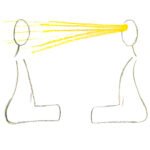 Guest Blog – The Light of the Guru by Priya Tandon
Guest Blog – The Light of the Guru by Priya Tandon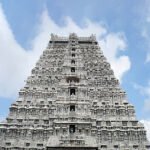
 On The Occasion of Guru Purnima 2025
On The Occasion of Guru Purnima 2025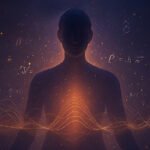
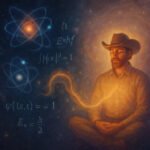
 The End of Duality
The End of Duality Advaita and the Energy Body
Advaita and the Energy Body True Apperception
True Apperception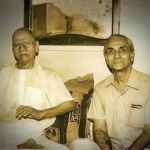
 The World’s Best Astrologer
The World’s Best Astrologer Ramesh Balsekar – Destiny’s child is 90
Ramesh Balsekar – Destiny’s child is 90 An old & ordinary friend (by Anand – Gautam’s school friend)
An old & ordinary friend (by Anand – Gautam’s school friend) Maharaj and the Trojan Horse of Conscious Presence
Maharaj and the Trojan Horse of Conscious Presence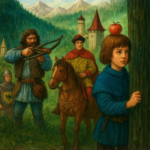
 Consciousness and the Fenix
Consciousness and the Fenix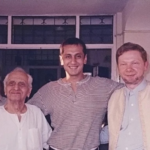 Consciousness and the Now
Consciousness and the Now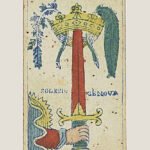 A Double-edged Sword
A Double-edged Sword Spending no time with Eckhart Tolle
Spending no time with Eckhart Tolle